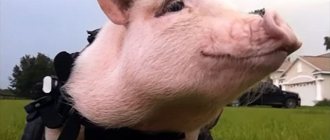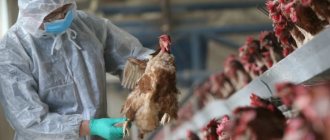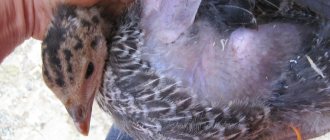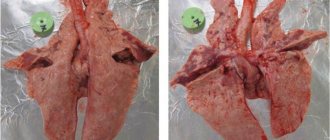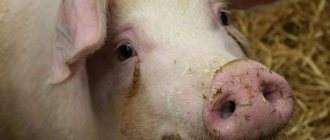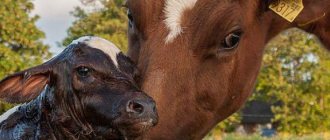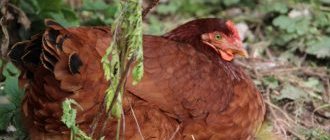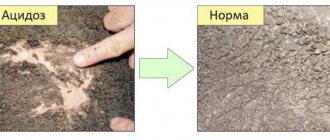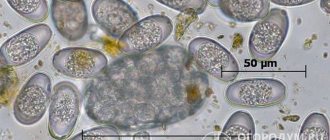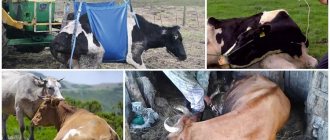- Contagious and non-contagious diseases of quails and methods of their treatment
- Non-contagious diseases of quails
- Quail diseases caused by poor diet
- Violation of egg shell formation
- Various vitamin deficiencies
- Prolapse of the oviduct along with the egg
- Bird poisoning
- Yolk peritonitis
- Enteritis
- Esophageal blockage
- Quail diseases caused by violation of the regime
- Occurrence of cases of cannibalism or pecking
- Conjunctivitis
- Feather loss (bald patches)
- Oviduct prolapse
- Goiter Qatar
- Quail diseases caused by injuries, bruises and damage
- Injuries, damage and bone fractures
- Contagious diseases of quails
- Video: main quail diseases
Contagious and non-contagious diseases of quails and methods of their treatment
In order to prevent the disease in a timely manner, as well as to be able to effectively treat your pets, it is necessary to identify the disease as early as possible. And for this, do not forget to examine your pets every day when feeding. Pay attention to the appearance of the bird, the condition of the feathers, skin, and the mobility of the head, wings and legs. In this article we will talk about quail diseases and methods of treating them.
The behavior of healthy birds is their everyday state to which you are accustomed. Healthy quails are always active, move a lot, and have a good appetite. Their plumage is smooth, shiny, clean, and brightly colored.
Sick birds have ruffled feathers, they may have trouble standing on their feet or squatting. There may be disturbances in the motor functions of the wings and legs. A sick bird sits alone in a cage, ruffled, does not approach the feeders, and its eyes may be closed.
If you notice that something wrong is happening with your quail, and its condition corresponds to any symptoms of the disease, then immediately isolate the sick bird from the healthy ones. To do this, place it in a separate cage, or a separate box - an infirmary. Give her first aid and be sure to consult a veterinarian. If possible, invite a veterinarian to your place, or take your bird to see him. And together with him, determine treatment measures for sick birds and preventive measures for healthy birds.
Quail diseases.
You should know that in birds, in particular in quails, all diseases are divided into non-contagious and contagious. Non-contagious diseases of quail include various injuries to the bird, as well as diseases caused by violations of dietary regimes and diets, improper maintenance and care. These diseases are not transmitted through the air or through contact with sick birds. Contagious diseases of quail are those diseases that are transmitted as a result of various infections. Poultry mortality due to infectious diseases can reach 100%.
Hypovitaminosis
We looked at various types of infectious and parasitic diseases of quails and their treatment, as well as symptoms. Hypovitaminosis is a non-communicable disease. It is caused by a lack of vitamins A, B, C, E. The bird may ruffle its feathers, lose appetite, stretch its neck, and droop its wings. All this indicates poor nutrition and lack of nutrients.
Treatment involves adding legumes, feed yeast, fish and bone meal, and green feed to the feed if the mixtures are prepared independently. But it is best if the quail eats ready-made specialized food, in which the composition of nutrients is balanced. In severely advanced cases, the bird may die. Hypovitaminosis can complicate oogenesis.
Read also: Crevecoeur chickens: features of breeding at home
Quail diseases caused by poor diet
These diseases occur when quail feeding rules are violated. Improper composition of quail feed can deprive quails of essential vitamins and minerals. Or vice versa, an overdose of various mineral supplements and vitamins in the feed leads to excessive feeding with these substances. Both a deficiency and an excess of all this can cause various diseases in quails.
Violation of egg shell formation
As a rule, the cause of this disease is an insufficient amount of minerals, calcium and vitamin D in the diet of quails. With this disease, quails lay eggs with a very thin and soft shell, or without a shell at all, but only with an under-shell film.
Treatment: Increase the mineral content in the quail's diet. Add the required amount of chalk to the food, as well as crushed shells. Crushed shells from used quail eggs can be used as a mineral substance.
Various vitamin deficiencies
This disease occurs when there is a lack of vitamins of groups A, B, C, D in the body of quails. Thus, if there is a lack of ascorbic acid (vitamin C) in the body, there is a slowdown in the growth and development of young animals and impaired feathering. In adult quails, egg production decreases, and the quality of the shell also deteriorates.
Treatment: add to the diet the required amount of feed containing vitamins - fish and meat and bone meal, feed yeast, green feed.
Prolapse of the oviduct along with the egg
This disease can occur both as a result of improper nutrition and as a result of improper maintenance. It occurs if, when keeping quails at the age of 30-45 days, they use full nutrition for an adult bird and intense lighting for 20-24 hours. In this case, early sexual development is stimulated and early egg laying occurs (at the age of 30-35 days). In female quails that have not had time to frolic physiologically, there may be cases of oviduct prolapse along with the egg. In this case, as a rule, the quail dies. The same diseases can occur in adult birds if there is a lack of vitamins A and D2 in the diet.
Treatment: To eliminate this disease, add a double dose of vitamins A and D2 to the quail diet for a week.
Bird poisoning
Most often, quail poisoning occurs with large amounts of table salt. When this type of poisoning occurs, the bird drinks water all the time, various gastrointestinal disorders are observed, and the bird is depressed.
Treatment: the bird is given a decoction of flaxseed, with the addition of vegetable oil. The broth should have a slimy consistency. You also need to give a weak solution of activated carbon for 5 days. And for prevention, periodically give the birds special antibiotics or chamomile decoction.
Yolk peritonitis
With this disease, the serous covers of the peritoneum, pleura, and internal organs become inflamed. And it appears if the decomposed yolk mass of the ovarian follicles penetrates into the abdominal cavity of the bird. The bird becomes weak, depressed, and its appetite decreases. The feathers near the cloaca are stained with feces. In some birds, the temperature rises and, of course, the temperature drops and egg laying stops completely.
Treatment for this disease is unfortunately ineffective. You can, of course, use antibiotics or sulfonamide drugs (10 mg of sulfathiazole per 1 gram of feed), but most often the hen stops laying eggs after this. To avoid this problem, provide your birds with a balanced diet containing vitamins, protein and calcium.
Enteritis
It occurs due to an acute bacterial infection, which most often affects young individuals. It can be characterized by an unexpectedly beginning and rapidly increasing level of bird mortality. The birds have poor appetite, are tormented by thirst and diarrhea. Near the anus the feathers are dirty. If the bird suffers from diarrhea, you can give 1 tablet of Furazalidone per glass of water. If constipation occurs, you can use a glass spatula, which is used to insert the ointment behind the eyelid, and inject two or three drops of castor oil into the cloaca. Using a non-sharp tool, slightly destroy the plug that has formed. For prevention, periodically release birds from their cages to fly, and include fruits, herbs and raw vegetables in their diet.
Esophageal blockage
When the esophagus is blocked, the bird becomes short of breath, the beak is wide open, and the birds behave restlessly. By palpating the esophagus, you can detect a thickening hanging down to the ground. For treatment, inject 100 ml of vegetable oil into the beak of the affected bird. Massage with your fingers and rinse with water using a funnel and rubber probe. And for prevention, provide birds with a balanced diet with minerals and vitamins. Clean and fresh water should be in abundance.
Popular infectious diseases
Conjunctivitis
One of the most common diseases of quails is conjunctivitis. Kerato-conjunctivitis is popular. This is nothing more than inflammation of the mucous membranes of the eyes and organs of the respiratory system. The cause of severe illness is poisoning with ammonia preparations or gases. This disease occurs in all types of poultry, without exception.
Presence of down-eaters
These insects reproduce very quickly. Although the lifespan of one of them is no longer than 8 days, their numbers are growing very quickly in geometric progression. The appearance of this insect in cramped enclosures is especially dangerous.
Parasite parasite - photo under a microscope
You can do the treatment yourself:
- Give the bird free access to the ash-sand baths, after adding insecticidal preparations to them. You can find out exactly what proportions are suitable and at the veterinary services in your area.
- To enhance the effectiveness of drugs, insecticidal aerosols can be used. Pay special attention to the fact that after treatment with such medicines, eggs laid by them should not be consumed for 3-5 days.
- Place sick birds in another aviary.
Atypical plague
Atypical plague or the new name Newcastle disease affects those individuals that live in open enclosures. Viral diseases of this type of quail are transmitted aerogenously. The danger of the disease is that viruses can infect the human body.
Read also: How much does a duck eat before slaughter and how to cut a duck
Acute forms lead to the death of young animals and adults. Sometimes the disease is asymptomatic, so it is difficult to assess the extent of the disease and the number of infected birds. There are no specific symptoms either, but in most cases there is diarrhea, loss of appetite, shortness of breath, rhinitis, discharge from the eyes or conjunctivitis. In advanced acute cases, paralysis, tremors, and neck twisting occur.
There is no need to treat them yourself. It is necessary to consult with an experienced veterinarian who will determine the extent of the disease, the nature of its course and the number of infected individuals.
Numerous quail diseases can be prevented
Quail pox
This disease manifests itself as quail head exanthema, as well as lesions of the oral mucosa, similar to diphtheria. Only a qualified doctor will treat such a viral disease. He will prescribe a course of special vaccines that will stop the progression of the disease and the spread of the quail disease. To speed up the effectiveness of treatment, you can give a tetracycline solution as a drink. For 5 days, dilute 1 tablet per 1 liter of clean water.
Quail diseases caused by violation of the regime
These diseases occur when the rules for keeping quails are violated. Violation of poultry stocking standards (usually increased density of quail planting), bright light, placement of a cage with quails in direct sunlight or in a draft, non-compliance with the light regime or feeding regime can cause various diseases.
Occurrence of cases of cannibalism or pecking
The reason for the manifestation of this disease, as a rule, is the crowded keeping of the birds, as well as bright lighting. Quails behave restlessly, fight, peck at each other. Moreover, the damage is usually inflicted in the head area. If measures are not taken, the damage inflicted by quails on each other may be such that their heads are pecked off, their eyes are pecked out, and some may be pecked to death. This often manifests itself when a new male is placed in a female’s cage.
Treatment: First, isolate the injured bird in a separate cage. Reduce lighting and reduce planting density. Follow a complete diet for quails, including fish and bone meal. For no reason, try not to rearrange birds in cages (transplanting birds from one cage to another, i.e. from one group of quails to another).
Conjunctivitis
Most often it occurs due to lack of hygiene in the poultry house. Symptoms include swollen eyelids and mucus that comes out of the eyes, causing the eyelids to stick together. To avoid this disease, keep cages clean, free from drafts and feed them a good, balanced diet. If such a problem does occur, then rinse the damaged eye with a 3 percent solution of boric acid. If, after all, the problem is viral in nature, then it is treated with antibiotics prescribed by a veterinarian.
Feather loss (bald patches)
This disease appears when there are drafts in the quail keeping room, as well as when air humidity is low (less than 50%). In quails, feathers fall out on their backs and heads, and islands of bald patches appear, that is, unfeathered areas of skin. Feathers become brittle and feather tips are destroyed.
Treatment: Eliminate the causes of the disease (drafts and low humidity). For prevention, add B vitamins to your diet - feed yeast.
Oviduct prolapse
Occurs if the bird is kept in conditions that cause rapid puberty. This is affected by long-term room lighting, bright light and food intended for an adult. The bird has problems laying eggs, which over time develops into a complete cessation of egg production. The oviduct becomes very inflamed (swells) and protrudes into the cloaca. The feathers of the cloaca become dirty due to severe diarrhea, which is an excellent environment for the emergence of harmful microorganisms. If you don’t want to call a veterinarian, it is recommended to straighten the oviduct back yourself. First, rinse it with water and a 2% solution of alum or tannin. The oviduct and finger are lubricated with Vaseline and the oviduct is carefully inserted inside. For prevention, vitamins A and D are introduced into the diet, daylight hours are properly organized, and if problems arise with the cloaca (clogging), it is necessary to urgently get rid of them.
Goiter Qatar
Occurs when birds are systematically fed with low-quality feed. Symptoms: poor appetite, swollen crop, grayish fluid secreted from the nostrils and beak, and a hanging crop develops. At the beginning of treatment, the goiter must be emptied. Grab the quail by the paws and turn it head down. In the direction towards the beak, stroke the crop with light massage movements. Perform this procedure several times throughout the day. During the treatment process, the bird is given only water to which a 0.5% solution of hydrochloric acid has been added. On the 2nd day, you can feed her soft milk food. This quail disease can be prevented by following sanitary and veterinary rules for keeping birds and providing adequate nutrition. Do not allow your bird to eat low-quality food. Be more attentive to the places where quails walk. Do not allow them to be near warehouses containing mineral fertilizers. Wash the feeders every day and disinfect them once a week. The water in drinking bowls should always be fresh and clean.
Disease prevention methods
Many quail diseases can be prevented simply by observing the conditions of detention and timely preventive methods:
- Maintaining a suitable temperature regime so that the birds do not languish from the heat and do not freeze.
- Maintaining proper lighting conditions will help prevent aggressive behavior.
- The premises in which birds are kept must be spacious, have a good ventilation system and no drafts, and be cleaned regularly. The air should not be musty and dry.
- The daily diet of birds must contain all the necessary vitamins, minerals and green food in an appropriate dosage.
- Monitor the cleanliness of the water in the drinking bowls, regularly change fresh water, and disinfect the drinking bowl.
- Feeders and drinking bowls must be kept clean, food residues and droppings must be removed.
- Avoid any interactions with other pets and birds.
- Adults and young animals must be kept in separate pens and cages.
- When purchasing new birds, they should be quarantined for a month.
- There can only be one quail in one cage.
- Disinfect incubators and eggs with formalin steam before laying.
- Remove bird droppings daily.
- Monitor the health of the quails, notice any changes in appearance and behavior. In case of the slightest suspicion, isolate sick individuals in a separate room.
- If a dead animal is found, place the body in a bag and send it to a veterinary clinic for examination. This procedure will help to understand whether the bird has died from an infection and whether there is a risk to the rest of the brood.
- At least once a week, treat equipment, feeders and drinkers with a 0.5 percent formaldehyde solution.
Watch a video about the general signs of sick quails and measures to prevent bird diseases:
If you follow all the recommendations, the number of quail diseases will be reduced to a minimum or they can be avoided completely. The basic rules of keeping are sufficient space for the birds, cleanliness, quality food and monitoring the health of the quails. These rules will help protect not only your brood of birds, but also guarantee safety for you and your family.
0
0
Copy link
Quail diseases caused by injuries, bruises and damage
These diseases usually appear as a result of the bird being frightened and suddenly trying to fly up in the cage. In this case, the bird may involuntarily injure itself on the roof or walls of the cage. Also, a quail can receive such damage if the bird is carelessly placed in a cage.
Injuries, damage and bone fractures
These injuries occur when parts of the cage are struck. Depending on the severity of the injuries, decisions about treatment (or not treatment) may be made. If, as a result of an injury, the bird received an open fracture of the wing or paw, and it is not a selection specimen, then it is better to use such a bird for meat. If the bird is of interest from a breeding point of view, then you can try treatment.
Treatment: First of all, isolate the bird from the rest of the inhabitants of the poultry farm. In case of injury, carefully trim the feather around the wound with scissors. Treat the wound with a solution of potassium permanganate or furatsilin. Lubricate the wound with iodine tincture and, if possible, bandage the wound. After 2-3 days, unwind the bandages and inspect the wound, if necessary, lubricate with iodine again. If there is a fracture, carefully straighten the ends of the bones and disinfect the skin around the damaged area. Apply cotton wool and a splint of thin sticks to the broken bone. Bandage everything carefully.
Quail pox
A contagious viral disease of quails, accompanied by fever, papular-pustular rash on the head, around the eyes and on mucous membranes.
Symptoms: their manifestation depends on the state of the immune system and skin. Pockmarks affect the eyelids and beak (a type of wart-like growth). Diphtheretic deposits are found in the oral cavity.
Treatment: feed is enriched with vitamin A. Potassium iodide is added to drinking water. Conditionally healthy birds are given drugs in the form of premixes with a set of broad-spectrum antibiotics.
Enrich your diet with vitamin A and carotene.
Contagious diseases of quails
Quails suffer from infectious diseases much less frequently than other poultry. But the possibility of their illness cannot be completely excluded. As a rule, contagious diseases arise as a result of exposure to various infections caused by any pathogenic pathogenic bacteria and viruses.
Note! The causative agents of these diseases, under favorable conditions, can easily and quickly multiply in the bird’s body, and as a result, your healthy, full of life quail turns into a sick and drowsy bird. And the saddest thing of all is that the mortality rate for infectious diseases can reach 100%.
As a rule, infectious agents and fly larvae are concentrated in poultry droppings, so timely cleaning of droppings is one of the preventive measures to prevent infectious diseases of your quails. Various antibiotics and antiseptics are used to treat infectious diseases.
Antibiotics are organic substances produced by microorganisms that have the ability to kill pathogenic microbes or prevent their growth. Antibiotics include: penicillin, tetracycline, streptomycin, oxyteraccycline, terramycin, biomycin, etc.
Antiseptics are agents that have an antimicrobial effect. They are also used to combat pathogenic microbes. Antiseptics include: boric acid, furatsilin, hydrogen peroxide solution, rivanol, potassium permanganate solution and chloracid.
Psittacosis is an infectious and extremely contagious disease, dangerous for both adult birds and young birds. Can be transmitted to humans. The causative agent of ornithosis or psittacosis is chlamydia of the trachoma genus, which enters the body through airborne droplets, food and drink. After infection, a severe fever occurs, the bird quickly weakens, and sleeps a lot. The heartbeat and breathing increase, and there is a risk of severe intoxication. Death usually occurs from nervous exhaustion and hemorrhages in the liver.
Ornithosis disease (Click on photo to enlarge).
Newcastle disease (Click on photo to enlarge).
Newcastle disease is a dangerous viral disease that is transmitted by contact from one individual to another. After infection, the bird’s body temperature quickly rises, lethargy and apathy appear. Appetite disappears, breathing becomes heavy, and you may notice severe shortness of breath. After a few days, sneezing and coughing occur, the feces develop a greenish tint and a foul odor. During exacerbations, the bird begins to walk in circles, and fits and seizures are possible. Death usually occurs from nervous exhaustion. There is no effective treatment for Newcastle disease or pseudoplague; infected individuals must be destroyed.
Pasteurellosis – this disease is also called cholera. It is an acute infectious disease that appears if its pathogen enters the blood. In quails, the liver begins to work poorly and problems with metabolism arise. If left untreated, the disease will develop into sepsis and the bird will die. Bloody droppings are the main symptom. A sick bird cannot be treated, so the remaining birds should be quarantined and all equipment and cages should be disinfected.
Salmonellosis – Birds become infected with this pathogen through droppings, water and contaminated eggs. Sometimes infection occurs through poor quality food. It can occur when birds are kept in a room where ventilation is poor and the density of quails per 1 m2 is high. Signs of the disease are: intestinal disorders, conjunctivitis, impaired coordination, drowsiness and weakness. Due to loose stool, the fluff under the tail sticks together and obstruction of the intestines occurs, which provokes poisoning of the bird’s body with bacteria. This disease has no cure. All sick birds are destroyed and the carcasses are not used for cooking. And the premises, cages and equipment must be disinfected.
Pseudoplague is also called “Newcastle” disease. It is dangerous because it can be transmitted to humans, and the bird can die in a few hours. In humans, it is expressed by diseases of the eyelids or eyes. A bird can become infected through contact with a sick bird, its droppings, as well as food, water or any equipment contaminated with droppings. Spreaders may be rats, dogs or waterfowl. The incubation period of the disease is from 2 to 15 days. It can occur with or without symptoms. Symptoms: little movement, bad odor from the beak, green droppings with blood streaks, poor appetite, difficulty breathing. It happens that the virus is in the blood of a bird and does not manifest itself. And sometimes the symptoms are mild - numbness of the limbs, seizures, and also a strange position of the head and neck. Opinions differ on what to do with sick birds: some say that the bird needs to be isolated and a veterinarian should be invited, while others believe that it is inappropriate to treat such a bird.
Aspergillosis is a fungal disease that is dangerous for many poultry. In adults, it may not manifest itself in any way, but in young animals the following symptoms appear: difficulty breathing, weakness of the body, the beak and paws acquire a blue tint, and severe thirst. Treatment can only be prescribed by a veterinarian. This may be a combination of vitamin therapy, antibiotic therapy and antifungal drugs. In order to prevent the occurrence of this disease, it is necessary to provide the bird with adequate nutrition, a clean room, and fresh and clean water in drinking bowls. And also do not forget to periodically wash the floor in the room with disinfectants.
Colicbacteriosis is a disease caused by E. coli. Birds become infected through food, water, and feces. A sick bird becomes lethargic and drowsy, the beak may turn blue, diarrhea appears, and the feathers near the cloaca become stuck together. Only a doctor can identify the presence of this pathology, and for treatment they use antibiotics and introduce acidophilic yogurt into the diet. Healthy birds are vaccinated, and cages and all adjacent equipment are disinfected. Prevention would include providing the bird with clean water and food, as well as cleanliness in the cage.
Helminthiasis - birds become infected with Singamustrachea worms. Symptoms include shortness of breath and cough. Treatment is carried out with Thiobendazole, and young animals must be isolated from adults. In order to prevent widespread infection of birds, be sure to follow a number of steps: separate adult birds from young ones, keep the chicks clean, keep one adult bird in a cage, and if new quails are acquired, keep them separately for 1 month.
Pullorosis - young quails are susceptible to this disease. There is only one outcome of the disease - the bird dies. And this disease can be caused by simple overheating or hypothermia, or poor quality food. A sign of the disease is a change in the color of the droppings, it becomes greenish-brown or white. Also, motor activity decreases; birds may fall on their paws, tremble, and hide in corners. The anus dries up and the bird dies. It is better to eliminate a sick bird, and disinfect the equipment and cage.
Keeping quails at home: a step-by-step guide (read more)
Infectious
Quail, like any other bird, can get sick. Experts classify diseases as follows:
Read also: How to catch a pheasant with your own hands
The causative agents of infectious diseases are various infections. That's why they are also called infectious. Rodents are carriers of infections. To prevent an infectious disease from attacking quails, contact with mice, rats and other rodents should be avoided.
Newcastle disease
Why do quails die at home? One of the reasons may be an acute viral disease - Newcastle disease (another name is pseudoplague). Despite the fact that quail of many breeds have innate immunity, they can be carriers of pseudoplague.
The disease may have an atypical form, which occurs without obvious signs. Mostly young animals can get sick this way. The main symptom in the typical course of the disease is croaking sounds. A bird can die from this disease literally within a few hours.
Quails susceptible to disease are lethargic and drowsy. They sneeze and cough, have difficulty breathing, and have diarrhea. Individuals sit almost motionless, hiding their heads under the wing. Sometimes they start walking in circles for no reason. Increased excitability, fever, and seizures may occur. The stool is loose and dirty green in color.
It is almost pointless to treat this disease. Basically the bird dies. Carcasses should be burned.
We continue the conversation about quail diseases and their treatment. One of the most dangerous diseases that affects young animals is pullorosis. In young individuals, motor activity decreases; you can notice chicks whose legs are stretching. They squeak loudly, they get chills, they try to hide in a corner.
Infected quails fall on their feet and die. During illness, droppings dry out at the anus, which leads to blockage. The virus enters the body with poor quality food. As a result of drought or hypothermia, the young animals become infected with the virus and begin to die. As in the previous case, the carcasses are burned.
Psittacosis, or avian influenza, is a respiratory disease of quail caused by chlamydia. The following symptoms are observed in birds: dishevelment, respiratory diseases, and the presence of fatal convulsions. Despite the fact that the clinical picture is often mild, quail begin to die as a result of exhaustion. Mostly young animals are affected.
Bird flu can also affect humans. You cannot become infected by airborne droplets from another person. The infection can be picked up when visiting a poultry house. In humans, psittacosis manifests itself in the form of respiratory diseases, and there is an enlargement of the liver and spleen.
Aspergillosis
This disease is caused by the presence of the fungus Aspergillus fumigatus in the body. If the bird is in poor conditions and has low immunity, infection with this fungal disease may occur through food that contains spores. Sick individuals experience difficulty breathing, the beak and paws begin to turn blue. The bird is thirsty all the time. If you spot quail with visibly blue plumage, you should call a veterinarian immediately. The use of the antibiotic "Hepatonic" will help save infected individuals.
Smallpox is a viral disease. The bird is shivering and a rash appears around the eyes and mucous membranes. Wart-like growths appear on the eyelids and beak. Diphtheritic plaques form in the mouth. The disease is treated with antibiotics. Potassium iodide is added to the drink, and the food is enriched with vitamins A and B.
Salmonellosis
Salmonellosis can also occur in quails. Birds can often carry salmonella. The reason is unsanitary conditions and lack of ventilation. As a result of infection, quails develop diarrhea. Liquid droppings gum up the feathers under the tail, causing intestinal obstruction. There is no cure for salmonellosis. Infected birds must be destroyed.
The main condition for the prevention of infectious diseases is quality nutrition and proper care.
Why do quails go bald?
Birds can lose their plumage due to physiology or disease. It is imperative to establish the cause of “baldness”. In some cases, this helps preserve livestock.
general information
Quail is a migratory bird. This sets it apart from other chickens. Domestic breeds also have a lot of feathers, which periodically fall out during molting. In other cases, baldness is caused by improper maintenance or pests.
Feather parasites
Sometimes quail pick up mites, which cause their feathers to fall out. Get rid of parasites using disinfection. All sparrowhawks are processed.
Insufficient humidity level in the poultry house
Monitor indoor air parameters. Feather loss is caused by low humidity levels. The best indicators are 40–65%. Too low humidity is also determined by other signs:
- the birds look disheveled;
- Quails have rapid breathing;
- the beak is open;
- females lay fewer eggs or stop laying them altogether.
To increase humidity, place a bowl of water. It's important not to overdo it. High humidity leads to colds. This can also cause feather loss and other problems.
High air temperature in the cage
Quails regulate their condition with the help of plumage. During prolonged heat, they shed excess feathers.
For normal life of the herd, the temperature must be maintained at 18–25 °C.
If the sparrowhawk is warmer, this is another reason for shedding its feathers. When the temperature is right, everything returns to normal again.
Drafts in the poultry house
Normal air movement and ventilation in a sparrowhawk are very important. However, drafts must be avoided. Among other things, they lead to baldness of birds.
Periodically inspect the plumage on the backs and heads of quails. If bald spots appear there, they look for various holes and cracks in the poultry house and seal them.
Increased crowding in the cage
When quails are cramped in cages, they feel uncomfortable. They often pull out neighbors' feathers. Plus, cramped conditions lead to shedding. There are other difficulties:
- the quality of feathers becomes worse;
- females lay fewer eggs;
- sometimes there is a death.
The solution to the problem lies in proper settlement. For 4–6 quails and one head of this family, you need a cage of at least 80 by 40 by 20 cm.
Poor quality diet
Sometimes the food lacks certain substances: amino acids, vitamins A, B. This also leads to feathers falling out in quails.
In this case, the diet is adjusted. Vitamin and mineral complexes are added. Feed-grade yeast is excellent.
Natural shedding
Sometimes feather loss is a normal process that does not need to be interfered with. Natural molting occurs at a certain age.
The first time happens about a month. The young bird changes its plumage to that of an adult. Then quails molt regularly, every season. In older individuals, new feathers in some areas no longer grow. This is also natural.
Zootechnical molting
Sometimes people lose their feathers. It has been noticed that you can get more eggs this way. Although the method is used, as a rule, only on large farms and poultry farms.
Shedding is artificially induced. They usually choose quails that are a little over a year old. Next, the birds are put into a stressful state: they are not given water and food, and their daylight hours are shortened.
Injuries and fights
Sometimes quails lose feathers for purely mechanical reasons. They are torn out during fights. The plumage in the head, legs, neck, and cloaca areas is most often affected. The following reasons lead to fights:
- little space;
- state of stress, for example, due to a transplant;
- struggle for leadership;
- limited amount of food;
- lack of lighting.
Cannibalism
Sometimes collisions end with pecking of relatives. Often young animals suffer or eggs are destroyed.
As a rule, constant fierce fights lead to pecking.
The main reason for cannibalism is nutritional deficiency.
The diet lacks proteins and other nutrients. In addition, the problem can be caused by unsatisfactory living conditions, stress, and some internal disorders.
What diseases can quails have?
Quail diseases can be contagious or non-contagious. Regardless of this, birds need to be provided with the correct treatment, thanks to which it will be possible to maintain egg production and meat productivity.
Quails, unlike other poultry, are less susceptible to diseases. The fact is that their body temperature is 2 degrees higher. This is not a favorable environment for the development of pathogens. But no one canceled prevention.
Most often, diseases affect adult birds, but in the absence of proper care for young animals, they can also affect chicks.
Diseases of the lower extremities
Another problem that quail often suffer from is leg disease. Among its reasons:
- keeping birds in a cage with a high ceiling, where the birds are injured when jumping;
- lack of soft bedding;
- excessive number of birds per unit area;
- cold indoors, leading to frostbite on the paws;
- gout caused by improper feeding;
- presence of ticks.
Quails with sore legs move little, sit for a long time, eat and drink poorly. When the cause of ill health is:
- gout, hard growths form on the paws, which over time can be noticed on the body;
- infestation with mites, areas of inflammation and crusts appear on the skin of the legs.
Before starting treatment, it is important to find out the cause of the leg disease. If this:
- frostbite, the bird is transferred to a well-heated barn;
- crowded conditions, the herd is being dispersed;
- hard floor, covered with sawdust or soft straw;
- tick infection - damaged skin is freed from crusts with tweezers, and then treated with tar ointment.
In case of gout, the diet is adjusted towards increasing feed rich in vitamins and minerals.
Avitaminosis
This disease signals a lack of vitamins in the body of birds and can occur:
- due to an unbalanced diet:
- after illness;
- as a result of intensive masonry;
- as a result of prolonged stress.
Among its signs:
- digestive disorders;
- loss of appetite;
- ruffled feathers and loss of feathers;
- inflammation of the mucous membrane of the eyes;
- pallor of the comb;
- retardation of growth and development in young animals.
Treatment includes the mandatory use of premixes, as well as increasing the proportion of greens, yeast and legumes in the diet.
